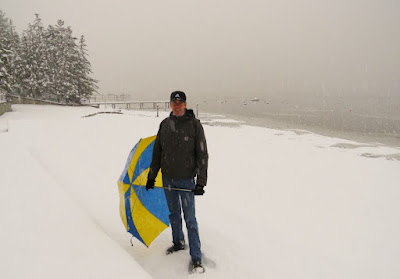I have been delighting in the National Postal Museum's Wine & Design programs, since the pandemic began.
"Our October virtual postal-themed crafting happy hour will feature the ominously named Dead Letter Office (DLO). After a lively talk with curator Lynn Heidelbaugh, the National Postal Museum’s Dead Letter Office expert, participants will explore the crafting side of the indecipherable with a demonstration led by artist Michelle Chen instructing how to clearly write your own calligraphy using supplies you have at home." Doesn't that sound like a really fun hour?
In 2016, Steve and I toured the Smithsonian Institution's National Postal Museum where I first learned of the Dead Letter Office.
The caption I put with this image was, "This display was just plain sad, to me. From mystery addresses and deficient postage to unclaimed items, undeliverable mail fell to the care and handling of the Dead Letter Office. For most of the nineteenth and twentieth centuries, the Dead Letter Office functioned to ensure all measures were taken to uphold the bargain that postage paid assured delivery."The United States postal system was established on July 26, 1775, and mail started going “dead” very soon after. They’re called dead letters because they are missives that can’t be delivered to their intended recipient or returned to sender, usually because there’s no return address. The USPS officially opened a dead letter office in 1825, but the idea of having one is older than the national postal service itself.I had to share my desk where all my missives are drafted and fretted over, wondering if they too would become dead letters.


Who were these letter detectives? At the turn of the last century, a widow named Patti Lyle Collins was its star employee. Toward the end of the 19th century, the postal service was swimming in undeliverable mail—about 7 million letters each year, according to one account. Rising migration both within and to the country, combined with comparatively low literacy, had produced a mass of mail with undecipherable addresses—considered “dead” unless the crack detectives of the DLO could interpret them.
To handle the rising tide, the post office hired a number of retired clergymen (deemed trustworthy enough to handle the money often inside the mail) and dozens of women, whose deft analytical skills, the postal service felt, were well-suited to untangling the confusing scrawls arriving en masse at post offices around the nation. These postal detectives used reference books, travel guides, and their own super-sleuth skills to help the letters find their rightful home.
Patti Lyle Collins, who began working in the Dead Letter Office in the early 1880s, was queen of them all. She reportedly handled about a thousand almost-dead letters a day, cracking the addresses on almost all of them. In 1893, Ladies Home Journal called Collins the office’s “presiding genius.” One source in 1901 called her "the greatest living expert in deciphering illegible and defective letter addresses.” Who knew?
What intrigued me a great deal was the variety of items that ended up in the DLO: brass knuckles, accordions and, according to this photo from 1922, tires of all kinds.These DLO facilities are now known as mail recovery centers (MRC). The USPS MRC is located in Atlanta, Georgia. Since April 2013, the postal auctions have been held online and include not only material lost in the U.S. but also material from other national postal authorities who consign them to the USPS for auction. Needless-to-say, I'm going to be looking for this auction! What fun (though sad, too). I still find it difficult to fathom that any of my mail ends up at a mail recovery center. I always include my return address and I usually over postage, when in doubt. That said, I am happy to learn that there is still effort to get the mail to its destination. I continue to have hope for all mail sent.
I have been a fan of calligraphy for decades yet I can't help but wonder how many exquisitely written addresses have ended up in the dead letter office.
This lecture was one that compelled me. I always wonder if a letter I send will actually be received (and I love our USPS). Knowing more about the postal employees whose job it is to get our mail to its destination comforts me.
Messenger of Sympathy and Love
Servant of Parted Friends
Consoler of the Lonely
Bond of the Scattered Family
Enlarger of the Common Life
Carrier of News and Knowledge
Instrument of Trade and Industry
Promoter of Mutual Acquaintance
Of Peace and of Goodwill Among Men and Nations
-Words carved above the Old Post Office, Washington DC





















































Recent Comments